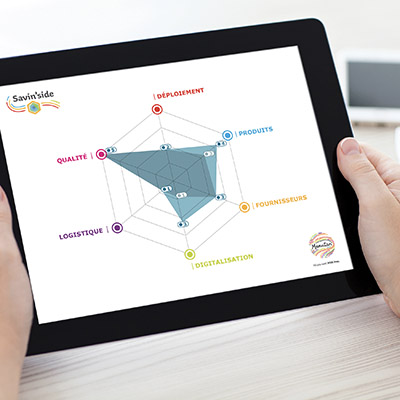Managing your supplier panel is a key factor in overall performance for any company. The starting point for this approach is to segment your supplier portfolio, then associate strategies with each type of supplier. Each one has their own characteristics and prospects, whether they are partner suppliers, strategic, preferred, transactional, on hold… The challenge for procurement departments is to obtain a clear, relevant and up-to-date view of their supplier portfolio.
Segmenting your supplier panel: An essential step
Supplier segmentation involves structuring and classifying your supplier portfolio according to different typologies. One of the most widely used methods in the procurement world remains the Kraljic matrix. This approach is based on analysing purchased goods, relying on the strategic importance of the product and the complexity of the supplier market. Over the years, experts have integrated other dimensions, such as the client-supplier relationship, client-supplier interdependence, etc.
Today, each company has its own way of segmenting and formalising the analysis of its supplier panel. This generally takes into account three essential factors:
- Supplier performance;
- Strategic importance;
- Quality of the relationship.
This allows for the identification of different types of suppliers and associated strategies. This is what determines the development, and even the future of the relationship between the two parties.
Schematically, this can range from a purely transactional relationship based on prices to a strategic partnership founded on strong cooperation. In the first scenario, the company primarily derives economic benefits on the direct costs of products (better value for money, discounts…) and indirect costs (efficient order management, inventory management…). In the second case, the company also gains non-economic benefits that are difficult to quantify but create value. These include, for example, product quality, delivery performance, product and/or service development time, complementary services, supplier know-how, or the quality of personal interaction.
The various types of supplier categories
Within companies, there are various types of suppliers, which can be ranked in order of importance from partner suppliers to "rejected" suppliers.
Partner or strategic suppliers
This type of supplier offers a strategic product or service that has a direct impact on the company’s overall performance. It also offers a unique competitive advantage, whether in terms of total costs of ownership, goods or services, and has strong innovation potential.
Such a relationship is typically contracted for several years, usually three to five years, but can extend beyond this when product development is involved. In one of their works, Jagdish N. Sheth and Atul Parvatiyar, both professors, explain that it’s about "developing close interactions with customers to mutually create value at the lowest cost, through ongoing efforts of cooperation and collaboration."
In this sense, both parties demonstrate great transparency in terms of prices and costs, but also, and above all, they align strategically. This can sometimes even extend to co-development of capabilities and investments. There is a desire for exclusivity, but especially for differentiation, with the aim of building a real competitive barrier. This partnership is also subject to robust communication, whether in the specialised press, internally, or via institutional reports.
Preferred, privileged or challenger suppliers
These types of suppliers offer, over the contractual period, the best quality/benefit ratio for the company. They cover less strategic product categories but master a certain technique or technology. Most often, they have won a tender for two to three years, covering an extended geographical area. The company can entrust them with new contracts, potentially putting them in competition with other suppliers in this category. The procurement department works to develop the commercial relationship so that each party can gain a competitive advantage.
Accepted or panel suppliers
These suppliers are both compliant with the expected performance level and in line with the procurement strategy. The procurement department is committed to continuing or developing activity with them. As such, they can be consulted for any new tender.
New or developing suppliers
These players have just joined the company’s supplier panel as they show potential. Initially, they are in a test phase, meaning they can be consulted on a case-by-case basis, with the approval of the procurement department.
Dormant, on hold, probationary or conditional suppliers
These types of suppliers do not meet the expected performance or are not currently in line with the procurement strategy. The procurement department temporarily suspends the allocation of new contracts to them but keeps them in the active supplier base.
Rejected suppliers
These are suppliers with whom the company is disengaging with or considers undesirable for various reasons. If they are still under contract, they are subject to an action plan to exit the active supplier base.
Each supplier category has its own action plan…
The procurement department thus determines the status of each supplier, with associated objectives and an action plan. For example, with strategic suppliers, buyers may focus on building loyalty and accelerating innovation. With panel suppliers, the emphasis will be on continuous contract management. With dormant suppliers, it will involve identifying substitute suppliers, etc.
Once this is formalised, it’s important to share all these elements with stakeholders within the company (the supplier’s status and actions taken), leading to an SRM programme (Supplier Relationship Management). This involves setting up a governance framework, a real strategy, and key performance indicators. Not to mention SRM software to streamline all processes, but also to automate data collection and analysis.
By understanding the different types of suppliers and their respective roles, the company finds itself in a clear and controlled situation, where it can gain in performance, maximise value and reduce risks. It’s therefore by investing in efficient management of its supplier relationships that it will be able to strengthen its competitiveness in the global market and ensure its continuous growth.









